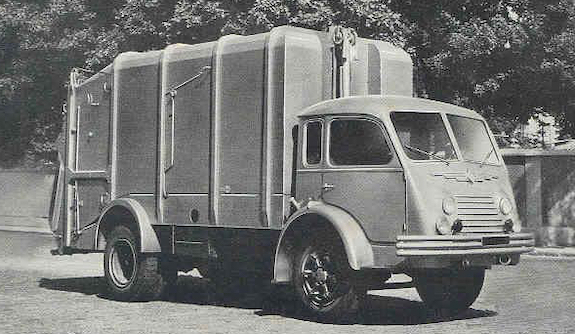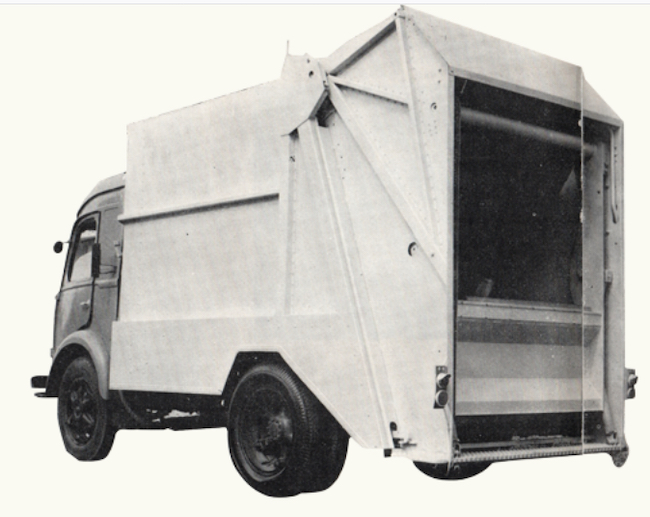
Founded in 1925, Sovel was one of the earliest suppliers of battery-electric trucks, many of which found use as refuse collection vehicles. Despite limited power and operating range, their silent operation was considered highly desirable in urban areas where early collections took place. Sovel also was granted many patents for refuse collection bodies, especially during the 1930s. Of their many designs, a pendulum-type packer invented by Louis Noyer in 1934 was perhaps the most successful. These bodies remained in production at least through the 1960s, long after electric trucks had given way to their piston-engined competitors 

The Sovel packer was a simple enclosed tipper, in which the hinged rear door served as a packer plate. Refuse was loaded over the shallow barrier on to the floor of the body. To pack, twin hydraulic rams pull the rear door inward, pushing the refuse through an opening under the inner partition. To prevent 'fallback', a retainer fence of vertical steel bars retracted and extended from within the inner partition. The fence was raised hydraulically to accept the incoming refuse as the packer cylinders energized. When the packer reversed, a valve released pressure in the circuit and heavy springs forced the fence back down, retaining the compressed refuse. To discharge, the rear door and retainer were swung upward, and the body tipped in the conventional manner. This system was copied by Glover Webb & Liversidge during the early 1950s. Their Loadmaster differed mainly in the overhead placement of the packing cylinders, whereas Sovel mounted their cylinders lower, within the body. The USA patent for the Noyer body was licensed to Gar Wood Industries in 1939, but there is no evidence that it was ever produced in America. 
Circa 1960 Sovel packer, a slightly updated version on the 1934 Noyer-designed body SELECTED PATENTS
|